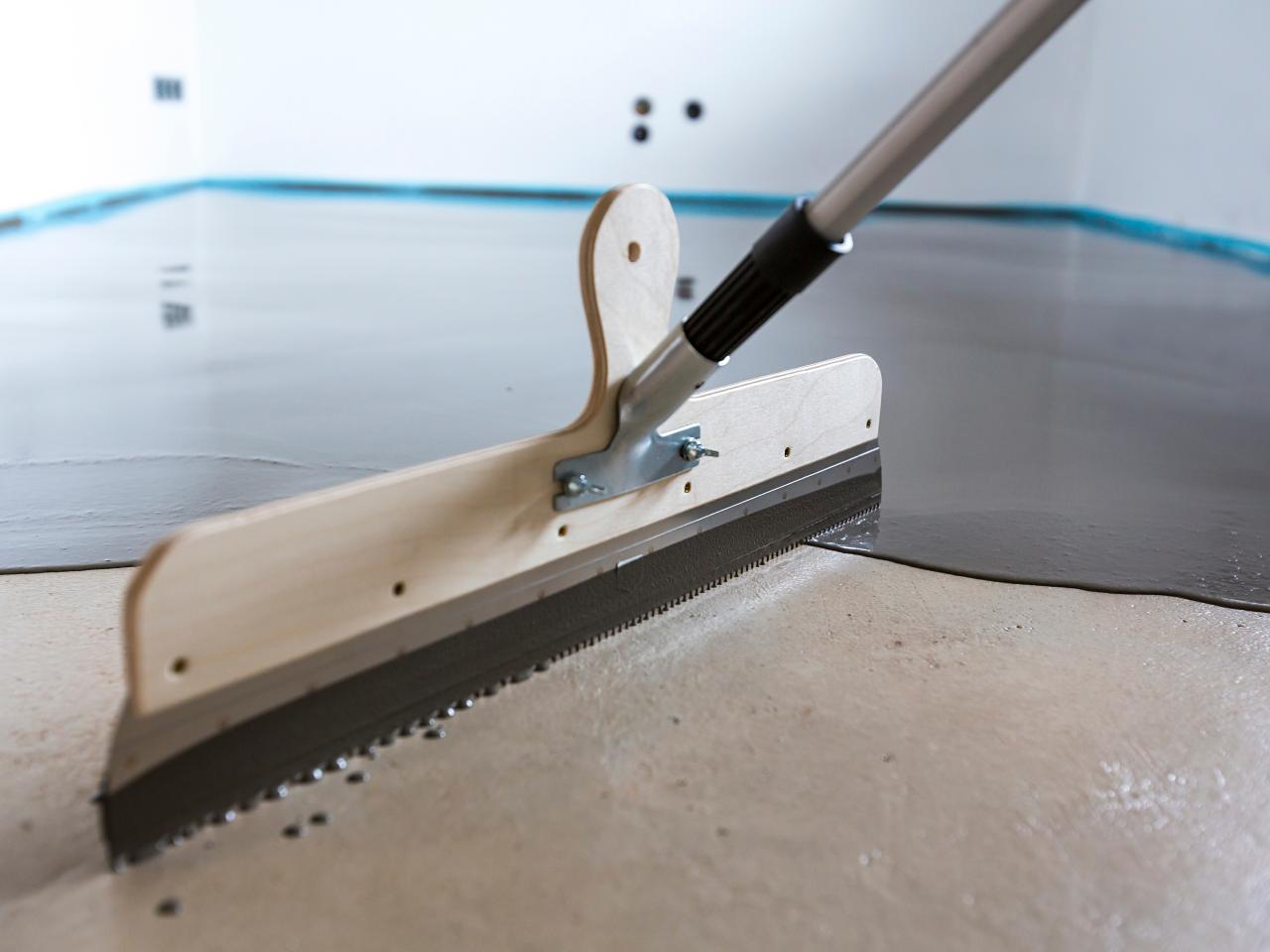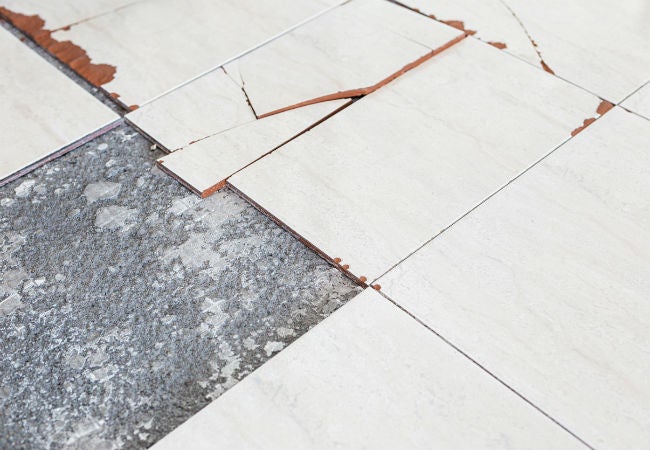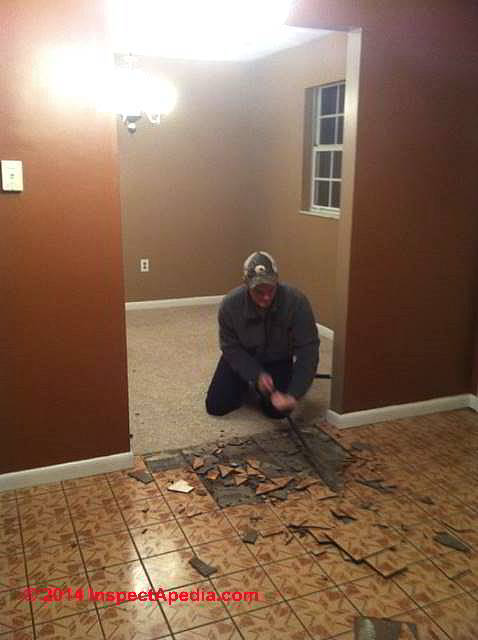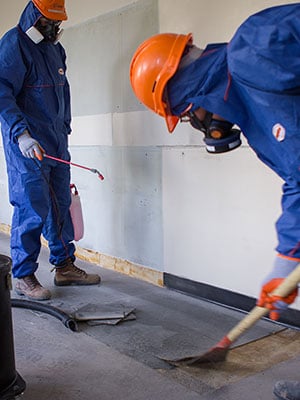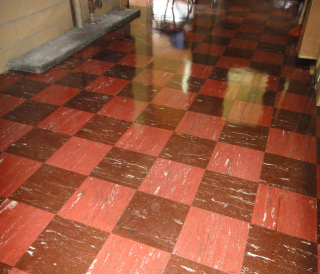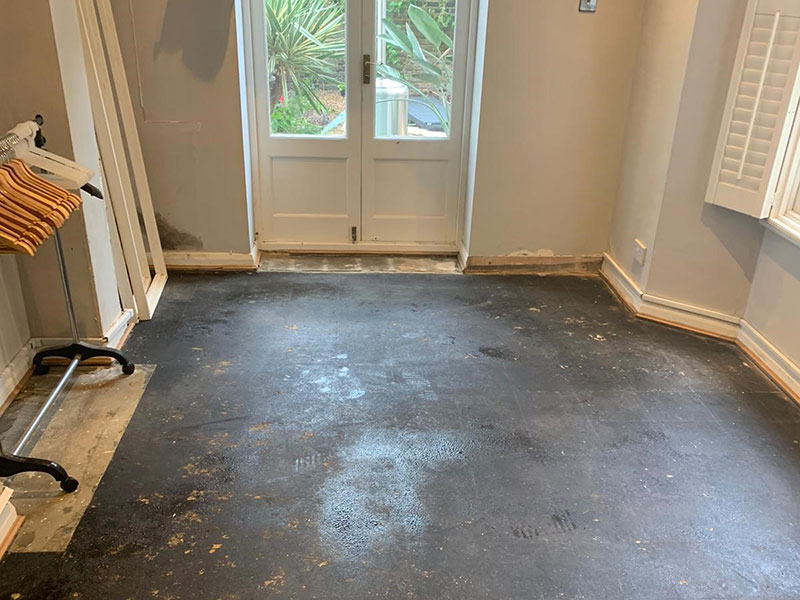The Dangers of Asbestos Tiles in Your Basement
Asbestos tiles are a common flooring material that was used in homes and buildings until the late 1970s. However, it is now known that asbestos poses serious health risks and should be removed if found in your basement. Here are some of the dangers associated with asbestos tiles:
- Inhalation of Asbestos Fibers: The most significant danger of asbestos tiles is the inhalation of asbestos fibers. When the tiles are disturbed, such as during renovation or demolition, the fibers can become airborne. Once inhaled, these microscopic fibers can lodge themselves in the lungs and cause serious health problems over time. Prolonged exposure to asbestos can lead to lung cancer, asbestosis, and mesothelioma.
- Friability: Asbestos tiles are considered friable, which means they can easily crumble into a fine powder when disturbed. The friability of these tiles increases the risk of fiber release, making them particularly hazardous during removal. Care must be taken to ensure that the tiles are not damaged or broken during the removal process to prevent the release of asbestos fibers.
- Contamination of Living Spaces: Asbestos fibers released during the removal of tiles can contaminate the air and settle on surfaces in your basement and other areas of your home. This contamination can be a long-term health hazard, as the fibers can remain in the environment for extended periods. The presence of asbestos in your basement can also make it difficult to sell your home, as potential buyers may be deterred by the health risks associated with asbestos.
- Legal and Financial Consequences: In many countries, including the United States, there are strict regulations regarding the removal and disposal of asbestos-containing materials. Failure to comply with these regulations can result in legal and financial consequences. It is essential to hire a licensed asbestos abatement professional who is trained and equipped to safely remove asbestos tiles from your basement floor.

How to Safely Remove Asbestos Tiles from Your Basement Floor
Step 1: Preparation
Before attempting to remove asbestos tiles from your basement floor, it is crucial to take the necessary precautions to ensure your safety. Start by turning off any air conditioning or heating systems to minimize the spread of asbestos fibers. It is also advisable to seal off the basement area from the rest of your home to prevent contamination. Wear protective clothing, including disposable coveralls, gloves, goggles, and a respirator with a HEPA filter.
Step 2: Assessment
Thoroughly inspect the basement floor to identify any damaged or deteriorating asbestos tiles. Take note of the size and quantity of the tiles that need to be removed. It is essential to handle damaged tiles with extra caution as they are more likely to release asbestos fibers into the air.
Step 3: Wetting the Area
Before starting the removal process, dampen the asbestos tiles and the surrounding area with water. This will help to minimize the release of asbestos fibers during the removal process. Use a spray bottle or a garden sprayer to evenly distribute water over the tiles. Avoid using excessive water that may cause flooding or damage to the floor.
Step 4: Proper Disposal
Asbestos tiles must be handled as hazardous waste due to their potential health risks. Contact your local environmental or health department to inquire about specific regulations and guidelines for asbestos disposal in your area. It is crucial to follow these guidelines to ensure the safe and legal disposal of the asbestos tiles.
Step 5: Removal of Tiles
To remove the asbestos tiles, start by carefully prying up a corner of a tile using a putty knife or a floor scraper. Slowly and gently lift the tile, keeping it as intact as possible to minimize the release of fibers. Continue this process for each tile, being mindful not to break or damage them further. Place the removed tiles into a sealed plastic bag or container designated for asbestos waste.
Step 6: Clean-Up
After removing all the asbestos tiles, thoroughly clean the area using a damp cloth or mop to remove any remaining dust or debris. Avoid using a vacuum cleaner, as it may spread asbestos fibers into the air. Dispose of the cleaning materials, including the damp cloth or mop, along with the asbestos waste.
Step 7: Professional Assistance
If you are unsure about handling asbestos tiles or if the removal process seems overwhelming, it is recommended to seek professional assistance. Hiring a licensed asbestos abatement contractor will ensure the safe and proper removal of asbestos tiles from your basement floor.
Hiring a Professional vs DIY
When it comes to removing asbestos tiles from a basement floor, homeowners are faced with the decision of whether to hire a professional or attempt a DIY (do-it-yourself) approach. Both options have their own advantages and disadvantages, and it’s important to consider various factors before making a choice.
Hiring a professional for asbestos tile removal offers several benefits. Firstly, professionals have the necessary expertise and experience to handle the task safely and efficiently. Asbestos is a hazardous material, and its removal requires specific procedures to minimize the risk of exposure. Professionals are trained in these procedures and possess the required equipment to ensure the job is done correctly.
Additionally, hiring a professional saves homeowners from the hassle and potential health risks associated with asbestos tile removal. Professionals have the appropriate protective gear to safeguard themselves and others from asbestos fibers. They also have the knowledge to properly dispose of the removed tiles in accordance with local regulations.
On the other hand, opting for a DIY approach may seem cost-effective at first glance. Homeowners can potentially save money by not hiring a professional. However, it is crucial to consider the potential risks and complexities involved in asbestos tile removal. Improper handling of asbestos-containing materials can lead to health hazards, including respiratory issues and increased chances of developing asbestos-related diseases.
Furthermore, DIY removal may not guarantee the complete removal of asbestos fibers, as it requires specialized techniques and equipment. Inadequate removal can result in residual asbestos fibers remaining in the basement, posing a continuous health risk to occupants.
It is important to note that regulations regarding asbestos removal vary depending on the jurisdiction. DIY asbestos removal may not be permitted in some areas, emphasizing the importance of researching and understanding local laws and regulations before making a decision.
Proper Disposal Methods for Asbestos Tiles Protecting Yourself and the Environment
Removing asbestos tiles from a basement floor can be hazardous if not done properly. Asbestos is a naturally occurring mineral that was commonly used in building materials, including floor tiles, until its health hazards became known. When asbestos tiles are disturbed or damaged, they release microscopic fibers into the air, which can be inhaled and cause serious health issues, including lung cancer and mesothelioma.
To ensure the safe removal and disposal of asbestos tiles from your basement floor, it is essential to follow proper procedures and guidelines. Below are some steps to help protect yourself and the environment during the process:
- Conduct a thorough assessment: Before beginning the removal process, it is crucial to determine if the tiles contain asbestos. Sampling and testing by a certified asbestos professional can confirm the presence of asbestos and guide further actions.
- Hire a licensed asbestos abatement contractor: Asbestos removal should only be performed by professionals who are trained and licensed in handling asbestos materials. These experts have the necessary equipment and knowledge to ensure safe removal, minimizing the risk of asbestos exposure.
- Prepare the work area: To contain the asbestos fibers, it is essential to isolate the work area from the rest of the house. This can be done by sealing off doors, vents, and other access points with plastic sheeting and tape. Additionally, covering the floor and any nearby surfaces with plastic will help prevent the spread of asbestos dust.
- Wear appropriate protective gear: When working with asbestos, it is crucial to wear personal protective equipment (PPE) to minimize exposure. This includes disposable coveralls, gloves, shoe covers, and a respirator with a high-efficiency particulate air (HEPA) filter.
- Wet the tiles: Before removing the tiles, it is recommended to wet them down with a mixture of water and a small amount of detergent. This helps to reduce the release of asbestos fibers into the air.
- Remove tiles carefully: Use proper techniques to remove the tiles without breaking or damaging them further. Avoid using power tools or abrasive methods that can generate dust. Instead, consider using hand tools and gentle prying to lift the tiles intact.
- Double-bag and seal the waste: Place the removed tiles and any associated materials, such as gloves and plastic coverings, into labeled, heavy-duty plastic bags. Double-bagging is recommended to provide an extra layer of protection.
Asbestos Floor Tiles 101: What to Know About this Old Home Hazard
Asbestos Floor Removal Procedure FAQs #2 Recent Qu0026A on proper
Asbestos Floor Tile Removal Cost Guide for 2022
Asbestos Tiles and Mastic Removal with FoamShield
Do You Need to Seal Mastic Before Installing A Wood or Vinyl Floor?
Asbestos Tile Removal
Asbestos Bitumen Glue Adhesive Removal Cost Guide for 2024
Related Posts:
- Concrete Flooring Options For Basement
- Sill Gasket For Basement Floor
- Vinyl Flooring In Basement Pros And Cons
- How Thick Are Basement Floors
- Thermal Break Basement Floor
- Interlocking Rubber Floor Tiles For Basement
- Remove Water From Basement Floor
- Types Of Basement Floor Drains
- Basement Floor Cement Sealer
- How To Lower Your Basement Floor
